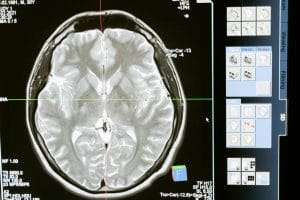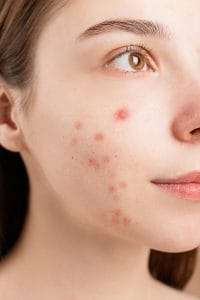Introduction
Vitamin E is a crucial fat-soluble nutrient that plays a vital role in various bodily functions, from supporting immune health to protecting cells from oxidative damage. While frank vitamin E deficiency is relatively rare in healthy individuals in developed countries, certain populations are at higher risk of developing this condition [1]. Understanding the signs and symptoms of vitamin E deficiency is essential for early detection and prevention of potentially serious health complications. The human body needs vitamin e for proper immune function, and while the amount of vitamin e you get from diet is usually sufficient, those at risk for vitamin e deficiency should be monitored closely since deficiency can cause serious neurological complications.
What is Vitamin E?
Vitamin E refers to a group of eight fat-soluble compounds, with alpha-tocopherol being the most biologically active form in humans [2]. This essential nutrient serves as a powerful antioxidant, protecting cell membranes from damage caused by free radicals. It also supports immune function, helps maintain healthy skin and eyes, and plays a crucial role in neurological processes. While vitamin e may help protect cells from oxidative stress, studies suggest that vitamin e may also play a crucial role in maintaining healthy skin barrier function.
Glam Dust
Radiant Skin – Luscious Hair – Pristine Nails
Vitamin Shots
The ultimate brain and body supplements
Vitamin Sprinkles
The ultimate brain and body supplements
Risk Factors for Vitamin E Deficiency : Vitamin E Deficiency Signs
Several factors can increase the likelihood of developing vitamin E deficiency:
Malabsorption Disorders
Individuals with conditions that affect fat absorption are particularly susceptible to vitamin E deficiency, as it requires dietary fat for proper absorption. These conditions include:
- Celiac disease
- Cystic fibrosis
- Chronic cholestatic liver disease
- Short bowel syndrome [3]
Genetic Factors
Certain genetic conditions can affect vitamin E metabolism and transport, leading to deficiency even with adequate intake. The most notable is Ataxia with Vitamin E Deficiency (AVED), a rare inherited disorder [4].

Premature Infants
Babies born prematurely are at higher risk of vitamin E deficiency due to their incomplete development and limited vitamin E stores [5].

Clinical Signs and Symptoms : Vitamin E Deficiency Signs
Neurological Manifestations
The nervous system is particularly vulnerable to vitamin E deficiency, and neurological symptoms are often the most prominent signs. Peripheral neuropathy commonly manifests as reduced deep tendon reflexes, impaired proprioception, and numbness and tingling in extremities [6]. Patients may also experience ataxia, characterized by difficulty with coordination and unsteady gait. Additionally, retinopathy can develop, leading to changes in vision, decreased night vision, and weakened eye muscles [7].
 Muscular Signs
Muscular Signs
Vitamin E deficiency can significantly impact muscle health and function. Patients typically experience progressive muscle weakness, particularly in proximal muscles, making everyday tasks challenging. This weakness is often accompanied by myopathy, presenting as muscle pain, cramping, and decreased muscle mass [8].
Immune System Effects
Adequate vitamin E is crucial for optimal immune function. Research has shown that deficiency leads to increased susceptibility to infections due to impaired T-cell function and reduced antibody response. Natural killer cell activity is also compromised, further weakening the body’s defense mechanisms [9].
Skin and Hair Changes
Being a powerful antioxidant, vitamin E deficiency manifests through various dermatological signs. Patients often present with dry, rough skin and experience delayed wound healing. Premature skin aging and changes in hair texture or loss are also common manifestations.
Cognitive Impact
Research has shown that chronic vitamin E deficiency may affect cognitive function in several ways [10]. Patients often report memory problems and difficulty concentrating. Some studies have also linked long-term deficiency to an increased risk of neurodegenerative conditions and mood changes.
The Role of Nutrition in Skin Health
The connection between nutrition and skin aging has been extensively studied, revealing that what we eat significantly impacts our skin’s health and appearance. Research conducted by Dr. Jessica Wu demonstrates that “Diet plays a fundamental role in skin health, with certain nutrients having the power to protect against hasty aging and support skin repair” (Wu, 2018).

Antioxidant-rich foods form the cornerstone of an age-reversing diet. Foods high in Vitamins C and E, such as citrus fruits, berries, and nuts, help combat oxidative stress and support collagen production. Omega-3 fatty acids, found abundantly in fatty fish and flaxseeds, help maintain skin barrier function and reduce inflammation. The consumption of colorful fruits and vegetables provides a spectrum of phytonutrients that protect against UV damage and environmental stressors.
The Impact of Lifestyle Factors
Lifestyle choices significantly influence the rate at which our skin ages. Dr. Howard Chang’s research indicates that “Daily habits and environmental exposures can accelerate or decelerate the maturation more dramatically than many realize” (Chang, 2022). Sleep quality, in particular, plays a crucial role in skin regeneration and repair. During deep sleep, the body produces growth hormones that facilitate cellular repair and regeneration.
Stress management represents another critical factor in preventing early aging. Dr. Elizabeth Blackburn, who won the Nobel Prize for her work on telomeres, has shown that “Chronic stress can accelerate cellular aging by shortening telomeres, affecting not just skin health but overall longevity” (Blackburn, 2020). Incorporating stress-reduction techniques such as meditation, yoga, or regular exercise can help mitigate these effects.
Environmental Protection and Skin Health
Protection from environmental damage stands as a cornerstone of age-reversing skin treatment. Dr. Zoe Draelos emphasizes that “Sun protection remains the single most effective strategy for preventing early skin aging” (Draelos, 2021). This includes not only daily sunscreen use but also protective clothing and mindful sun exposure habits.
Air impurity presents another significant challenge to skin health. Recent studies have shown that urban pollution can accelerate skin aging through oxidative stress and inflammation. Implementing a proper cleansing routine and using products with protective antioxidants becomes particularly important for those living in urban environments.
The Science of Skincare
Modern skin care has evolved to incorporate evidence-based ingredients that support skin health and combat aging. Dr. Leslie Baumann states that “The most effective anti-aging skincare regimens combine protective measures with active ingredients that support skin renewal” (Baumann, 2019). Key ingredients such as retinoids, peptides, and growth factors have demonstrated significant benefits in improving skin appearance and function.
Retinoids, in particular, have shown remarkable effectiveness in addressing multiple signs of aging. These vitamin A derivatives work by increasing cell turnover, stimulating collagen production, and improving skin texture. Anti-inflammatory skin care products and ingredients can help reduce inflammation and soothe irritated skin. However, their use requires careful introduction and proper guidance to avoid irritation. Cosmetic procedures which are performed on skin are popular now a days, while effective, inner treatment, in the form of vitamins or supplements intake, are in many instances just as important or in some instances, more important. 
Multivitamins and Skin Treatment:
Multivitamins and certain vitamins can help with rejuvenation and skin health. Vitamin D, C, E, and K are especially good for skin health and can help reduce dark spots. A multivitamin containing vitamins A, C, and D and antioxidant compounds could improve skin health.
Glam Dust
Radiant Skin – Luscious Hair – Pristine Nails
Vitamin Shots
The ultimate brain and body supplements
Vitamin Sprinkles
The ultimate brain and body supplements
Understanding Prevention, Treatment, and Associated Risks

Taking vitamin e supplements has become increasingly common, though getting enough vitamin e through diet is often preferable. While vitamin e is a fat-soluble nutrient essential for health, the amount of vitamin e needed varies by individual. Evidence that vitamin e can help prevent heart disease remains mixed, and studies suggest an association between vitamin e supplementation and increased risk of prostate cancer. People can get enough vitamin through proper diet, though vitamin e absorption requires fat to absorb vitamin e properly. When vitamin e deficiency occurs, deficiency symptoms may worsen if left untreated, particularly if the deficiency results from an underlying condition like fatty liver disease. While deficiency is rare in developed countries, low vitamin e levels or isolated vitamin e deficiency may show any symptoms initially. The distribution of vitamin e in the body and vitamin e status can be affected by much vitamin e supplementation, and high doses of vitamin e might increase the risk of bleeding in the brain, especially when combined with vitamin k antagonists. Sources of vitamin e that are rich in vitamin e include various foods, and vitamin e is found naturally in many dietary sources. Whether vitamin e supplements can help correct deficiency depends on the underlying cause of the deficiency.
According to StatPearls Publishing and researchers like Sapiejka E, Wenska-Chyży E, Gomez-Pomar E, and Hatfield E, developing a vitamin e deficiency often occurs as a result of an underlying condition. Low levels of vitamin e and vitamin e deficiencies may need treatment with vitamin e acetate, though vitamin e supplements might not always be the answer. Before you decide to use vitamin e supplements or treat vitamin e deficiency, it’s important not to share sensitive information about your health status and to notice symptoms related to deficiency. Like vitamin e, vitamin d deficiency can also impact overall health, and the benefits of vitamin e include various physiological functions. Enough vitamin e is crucial, and vitamin e supplements can help when diet alone isn’t sufficient, though it’s essential to ensure you get enough vitamin from your diet first. Signs and symptoms of deficiency should be evaluated by a healthcare provider to determine if symptoms may be related to vitamin e deficiency.
Treatment and Prevention Considerations
When considering whether to take vitamin e supplements, it’s crucial to understand both benefits and risks. While vitamin e, a fat-soluble vitamin, is essential for health, high doses of vitamin e can increase the risk of bleeding and may interfere with blood clot formation, particularly in individuals taking blood thinners. Research has shown mixed results regarding vitamin e supplementation and heart disease prevention, and some studies have suggested a potential link between high-dose tocopherol supplementation and increased prostate cancer risk. To safely absorb vitamin e, individuals should consume it with fatty foods, as it requires dietary fat for proper absorption. This is particularly important for people with abetalipoproteinemia, a rare condition affecting fat absorption. Good sources of natural vitamin E include vegetable oils and leafy vegetables, which many experts prefer over supplementation. When deficiency occurs, symptoms may include neurological and muscular problems, though these vary among individuals.
Glam Dust
Radiant Skin – Luscious Hair – Pristine Nails
Vitamin Shots
The ultimate brain and body supplements
Vitamin Sprinkles
The ultimate brain and body supplements
Diagnosis and Testing
Laboratory Assessment
The diagnosis of vitamin E deficiency typically involves several key tests:
- Serum alpha-tocopherol measurement
- Lipid panel (as vitamin E levels should be interpreted in relation to lipid levels)
- Liver function tests
- Neurological examination [11]
Clinical Evaluation
Healthcare providers conduct a thorough evaluation that includes detailed medical history, physical examination, neurological function assessment, and review of dietary habits and supplement use. This comprehensive approach ensures accurate diagnosis and appropriate treatment planning.
Conclusion
Vitamin E deficiency, while relatively uncommon in healthy individuals in developed countries, can have serious health implications when present. The wide-ranging effects of this deficiency on multiple body systems underscore the importance of maintaining adequate vitamin E levels through proper nutrition and supplementation when necessary.
The management of vitamin E deficiency requires a comprehensive approach, including proper diagnosis, appropriate supplementation, dietary modifications, and treatment of underlying conditions. Prevention remains the best strategy, particularly for high-risk populations, through maintaining adequate dietary intake and regular medical check-ups.
As our understanding of vitamin E’s role in health continues to evolve, maintaining optimal vitamin E levels through a combination of dietary sources and supplementation when necessary remains crucial for preventing deficiency-related complications and supporting overall health and well-being.
References
[1] Institute of Medicine. (2000). “Dietary Reference Intakes for Vitamin C, Vitamin E, Selenium, and Carotenoids.” Washington, DC: The National Academies Press. https://doi.org/10.17226/9810
[2] Traber, M. G. (2007). “Vitamin E Regulatory Mechanisms.” Annual Review of Nutrition, 27, 347-362. https://doi.org/10.1146/
[3] Sokol, R. J. (1988). “Vitamin E deficiency and neurologic disease.” Annual Review of Medicine, 39, 247-263. https://doi.org/10.1146/
[4] Ouahchi, K., Arita, M., Kayden, H., Hentati, F., Ben Hamida, M., Sokol, R., et al. (1995). “Ataxia with isolated vitamin E deficiency is caused by mutations in the alpha-tocopherol transfer protein.” Nature Genetics, 9(2), 141-145. https://doi.org/10.1038/
[5] Brion, L. P., Bell, E. F., & Raghuveer, T. S. (2003). “Vitamin E supplementation for prevention of morbidity and mortality in preterm infants.” Cochrane Database of Systematic Reviews, (4), CD003665. https://doi.org/10.1002/
[6] Brigelius-Flohé, R., & Traber, M. G. (1999). “Vitamin E: function and metabolism.” FASEB Journal, 13(10), 1145-1155. https://doi.org/10.1096/
[7] Zingg, J. M. (2007). “Vitamin E: An overview of major research directions.” Molecular Aspects of Medicine, 28(5-6), 400-422. https://doi.org/10.1016/j.mam.
[8] Howard, L., Ovesen, L., Satya-Murti, S., & Chu, R. (1980). “Vitamin E deficiency and neurological function in patients with chronic pancreatitis.” Annals of Internal Medicine, 93(6), 786-790. https://doi.org/10.7326/0003-
[9] Meydani, S. N., Han, S. N., & Wu, D. (2005). “Vitamin E and immune response in the aged: molecular mechanisms and clinical implications.” Immunological Reviews, 205, 269-284. https://doi.org/10.1111/j.
[10] Morris, M. C., Evans, D. A., Bienias, J. L., Tangney, C. C., & Wilson, R. S. (2002). “Vitamin E and cognitive decline in older persons.” Archives of Neurology, 59(7), 1125-1132. https://doi.org/10.1001/
[11] Farrell, P. M., Bieri, J. G., Fratantoni, J. F., Wood, R. E., & di Sant’Agnese, P. A. (1977). “The occurrence and effects of human vitamin E deficiency.” Journal of Clinical Investigation, 60(1), 233-241. https://doi.org/10.1172/
[12] Machlin, L. J. (1984). “Vitamin E.” In: Handbook of Vitamins: Nutritional, Biochemical, and Clinical Aspects. New York: Marcel Dekker, pp. 99-145.
[13] U.S. Department of Agriculture. (2019). “USDA National Nutrient Database for Standard Reference, Release 28.” Agricultural Research Service.
[14] World Health Organization. (2009). “Vitamin E supplementation for preventing and treating health conditions.” WHO Technical Report Series, Geneva: WHO Press.
[15] Traber, M. G., & Atkinson, J. (2008). “Vitamin E revisited: do new data validate benefits for chronic disease prevention?” Current Opinion in Lipidology, 19(1), 30-38
